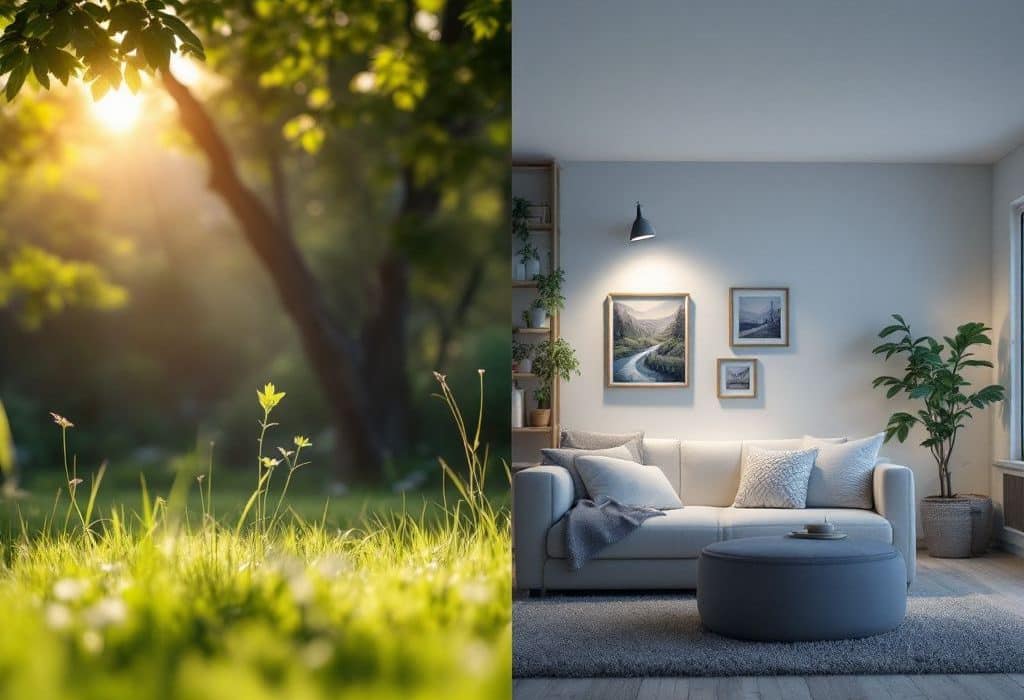Have you ever stepped outside after hours indoors and felt like you’ve been blasted by the sun’s warmth as if greeting an old friend? Or experienced restlessness on those dark, dreary days even when the artificial lights are all on? That’s because indoor lighting can deeply influence our environment and, subtly but surely, the aging process. The impact of indoor light on aging is a complex topic that reveals how optimizing our light exposure is crucial for health and vitality, especially as it intertwines with elements like humidity and other climate challenges.
Speaking of the aging process, while we often hear about the importance of skincare routines in our later years, it’s crucial to start considering these factors much earlier in life. For instance, understanding the role of retinol in your 20s can provide a foundational approach to maintaining a youthful appearance that extends beyond the visible effects of lighting. Incorporating retinol early can be a strategic move to enhance skin resilience over time.
Have you ever considered how glycosaminoglycans contribute to skin hydration and overall health? These natural compounds play a crucial role in maintaining skin’s moisture and resilience, which can be particularly beneficial when combating the drying effects of indoor lighting. Their role in maintaining skin elasticity and hydration is crucial, especially in environments with varying light intensities that can affect our skin condition.
Environmental factors like light significantly shape our daily lives, but what do they mean for our skin, especially as we grow older indoors? How can we turn artificial light into our ally instead of our foe? Let’s dive into this illuminating topic and unpack the connection between indoor lighting and our body’s natural aging processes. In doing so, it can be helpful to consider what is considered mature skin, as it can have different responses to light exposure and require specific care strategies.
Understanding Indoor Light and Its Effects on Aging
First off, let’s get a handle on how indoor lighting and aging connect. As humans, we’ve adapted to a cycle of natural light that’s been consistent for a very long time. This natural rhythm helps regulate various biological processes, including our circadian rhythms, hormone levels, and skin health. This understanding forms the basis for a comprehensive approach to counteract the negative effects of indoor lighting on skin, such as using a mature anti-aging solution that aligns with the body’s natural cycles.

Creating a Balanced Light Environment
It’s essential to consider the intensity and quality of light we expose ourselves to, especially within our homes and workplaces. While LED lights are popular, understanding their impact is crucial. Although they don’t emit UV rays, the blue light in LEDs can cause oxidative stress, which might contribute to skin aging. This is where incorporating knowledge about serum to remove dark spots can play a role in maintaining skin health.
Furthermore, ensuring that your environment has a balance of light intensity and warmth is key. A balance of natural and artificial lighting, with a focus on warm lights in the evening, can help maintain your circadian rhythms and support your overall wellness strategy. Understanding the relationship between how to remove black spots on the forehead may also be an essential part of a comprehensive approach to counteract the effects of aging.
In conclusion, while the challenges of indoor light aging might seem daunting, they can be managed with the right strategies. By using smart technology, making informed lighting choices, and incorporating targeted skincare, you can create an indoor environment that supports your overall health and slows down the aging process.
Remember, the journey towards slowing aging isn’t about drastic changes, but rather understanding the subtle influences of your environment. Whether it’s choosing the right artificial lights or selecting the best ways to manage humidity and other climate challenges, every small decision contributes to a comprehensive approach to aging gracefully.
And while lighting is a significant factor, don’t overlook the impact of environmental elements like humidity and temperature. These factors can affect how your skin ages, and knowing the best night moisturizers for your skin type can help prepare your skin for the varying conditions it may face.
While discussing skincare, it’s important to incorporate products that provide overnight benefits, such as a quick solution for black spots, which can help in rejuvenating your skin as you rest, complementing the effects of a well-chosen lighting setup.
Lastly, adapting to the changes in our environment and finding the right balance in lighting and skincare routine is key. By understanding the influence of top drugstore products, you can make informed decisions about your skin’s health and how best to protect it against the effects of indoor lighting and other environmental factors. Explore the top 10 drugstore anti-aging products to find suitable options that can enhance your skincare regimen.
With the right knowledge and tools, such as the best inexpensive anti-wrinkle creams, you can maintain a youthful appearance even in environments that challenge your skin’s resilience. So, embrace the power of well-chosen products and lighting solutions to create a sanctuary that nurtures your skin and spirit.


